November 21st, 2013
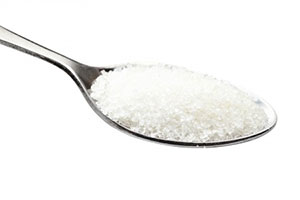 We’ve all been taught from a very young age about the dangers of sugar. We’re told to avoid candy, and to eat your vegetables. And while that is good advice, it misses the point. Sugar is one of the easiest fermentable substances available, and found in hundreds of foods, not just candy, so why the stigma? Well, it’s not so much the sugar that’s bad for your teeth; it’s the bacteria that love the sugar just as much as you.
We’ve all been taught from a very young age about the dangers of sugar. We’re told to avoid candy, and to eat your vegetables. And while that is good advice, it misses the point. Sugar is one of the easiest fermentable substances available, and found in hundreds of foods, not just candy, so why the stigma? Well, it’s not so much the sugar that’s bad for your teeth; it’s the bacteria that love the sugar just as much as you.
Let’s face it, sugar makes many foods delicious, it’s the added ingredient that turns a subtle flavor into something much bigger. So, really, how bad can sugar be for your teeth?
It’s not so much that sugar is directly bad to your teeth, but rather, bacteria known as streptococcus that lives and breeds in your mouth. Streptococcus loves sugar just as much as your taste buds. The bacteria go through a feeding frenzy when sugar is present in the mouth. The longer the sugar is in your teeth, the more time the bacteria have to feed. As it feeds, it begins to excrete acids that are the true culprits of tooth decay. They eat away at your enamel and cause cavities and other such problems.
While everyone’s teeth are different, and some are more susceptible to tooth decay, it is often the job of your saliva to add a buffer between the sugars and the bacteria that eat it. However, with large intake of sugar, such as candy, soft drinks, and sweets, it’s better to take steps to prevent cavities and tooth decay.
The best steps to warding off the harmful effects of sugar are to rinse and brush your teeth after you eat a considerable amount. This method flushes away any excess sugars that saliva did not get, and helps kill bacteria that still remain in the mouth. Use floss once a day to remove bacteria from the crevices of the teeth and gums, as they are much harder places to reach with a toothbrush.
Other methods to help clear your mouth of harmful sugars are by using topical fluorides and mouthwashes. There are some gums that are fortified with xylitol, which contains antibacterial elements and helps keep harmful tooth-decaying bacteria at bay.
So, the question, how bad is sugar for your teeth is not determined by just the sugar- but by the eater. Sugar is bad for your teeth if you decide to allow it to be. Proper oral hygiene along with conscious healthy practices can keep tooth decay from sugar at bay.
How much sugar should you consume then? In terms of the healthiness of your teeth, sky’s the limit, as long as you clean after. Though we don’t recommend you start eating pounds of jellybeans every day. However if you felt you overate one day, you shouldn’t worry as long as you keep your teeth clean. Although, for a proper diet, you shouldn’t consume more than about 150 calories of sugar per day, or about nine teaspoons.
If you stay consistent with your sugar intake and keep your teeth clean, then the stigma of sugar should vanish faster than Houdini. Of course, it’s also wise to schedule regular check ups with your dentist for routine cleanings and inspection of your teeth and gums. Contact Water Tower Dental today if you’re looking for professional dentists that can help you get on the track to a brighter, healthier smile.
November 14th, 2013
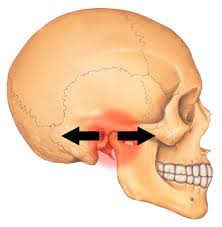 The Temporomandibular Joint, or (TMJ) is a hinge joint that connects your lower jaw to the bone of the skull located just in front of the ears. This joint allows the jaw to move freely so you can talk, chew, yawn, etc. The muscles that attach to the joint help control the position of the jaw and its movements. Often, many confuse TMJ with the term TMD, Temporomandibular Joint Disorder. Whether you refer to it one way or the other, TMD is a painful and often frustrating condition that, if not treated, can cause serious issues.
The Temporomandibular Joint, or (TMJ) is a hinge joint that connects your lower jaw to the bone of the skull located just in front of the ears. This joint allows the jaw to move freely so you can talk, chew, yawn, etc. The muscles that attach to the joint help control the position of the jaw and its movements. Often, many confuse TMJ with the term TMD, Temporomandibular Joint Disorder. Whether you refer to it one way or the other, TMD is a painful and often frustrating condition that, if not treated, can cause serious issues.
What Is TMD?
Temporomandibular Joint Disorder encompasses a group of problems that can happen with the Temporomandibular Joint. While a serious condition, most research on the disorder has not determined a single cause. Sometimes it can be a small problem that’s more of an annoyance than anything else, while other times it can greatly affect your livelihood.
The least severe cases of TMD can be caused by slight displacement of the joint, which causes pain when biting down hard on food. The pain shoots through the side of the mouth to the joint. While certainly not a serious condition, it’s no walk in the park. The pain can cause great discomfort along with being a tough distraction.
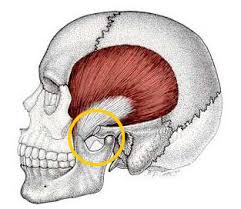 In the most severe cases, TMD can drastically change your life and become a very debilitating problem. The disc within the jaw joint can slip out of its position, most likely during sleep. When the person awakes, they discover that their jaw will not open more than a few millimeters. The person can’t open their mouth to eat, talk, or even brush their teeth.
In the most severe cases, TMD can drastically change your life and become a very debilitating problem. The disc within the jaw joint can slip out of its position, most likely during sleep. When the person awakes, they discover that their jaw will not open more than a few millimeters. The person can’t open their mouth to eat, talk, or even brush their teeth.
Whether your case of TMD is severe or moderate, there are a few signs that can signal an opportunity to fix the problem before its too late. Those symptoms include:
- Pain in jaw muscles and joints
- Pain in face and neck
- Sore and stiffened jaw muscles
- Clicking or popping sounds when moving jaw
- Noticeable change in the upper and lower teeth’s positions.
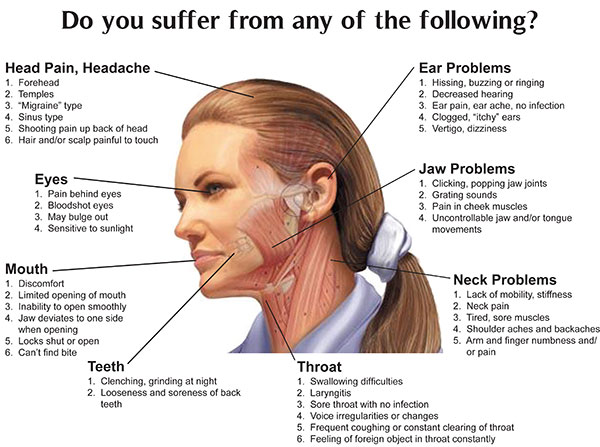
Is There a Cure?
There are several ways to detect jaw displacement as well as to cure the issue before it becomes serious. At Water Tower Dental we first determine how serious the issue and where exactly the problem is located. Luckily, many of the symptoms above can also be caused by neuromuscular dysfunctions.
We start by using a low-level frequency Transcutaneous Electrical Neural Stimulation, or TENS, unit. As it delivers small electrical impulses to the jaw muscles, it relaxes the to find the jaw’s ideal positioning.
A JVA or Joint Vibration Analysis is also used to measure sounds in the jaw joint. The information received helps us determine if the problem is part of the jaw muscle or if there is jaw joint damage and how much.
Once we determine what the main causes for the discomfort and pain, we can decide on a proper technique to fix. If improper jaw alignment is the case, and the Temporomandibular Joint is out of place, we can create a custom orthotic appliance to hold the patient’s jaw for proper alignment. The brace is worn for three months or until the jaw’s bite stabilizes. Afterward, we are able to alleviate any other symptoms through further therapy, drug therapy, and- in worst cases- surgery. Some patients may need further help and even use an orthotic appliance for the rest of their life.
If you’ve experienced any of the symptoms above, it’s wise to contact your dentist for a proper examination before the issue becomes too serious. Call Water Tower Dental today for the number one rated dentist in Chicago. We’d be happy to help you get on your way to a better, brighter smile.
November 7th, 2013
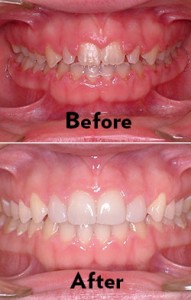 When a patient has an excessive amount of gum tissue covering their teeth, they can option for a procedure known as laser gum recontouring, or more commonly referred to as laser gum lifts. This simple procedure can transform a person’s mouth and give them a more confident smile. So what are laser gum lifts and how is the procedure performed?
When a patient has an excessive amount of gum tissue covering their teeth, they can option for a procedure known as laser gum recontouring, or more commonly referred to as laser gum lifts. This simple procedure can transform a person’s mouth and give them a more confident smile. So what are laser gum lifts and how is the procedure performed?
When gums become too excessive in the mouth, they can make teeth look small and stubby. This can be a cause of heredity issues, a specific health problem, or from the result of taking certain prescription drugs. While excessive gums can be unsightly they do not cause serious health issues. Gum recontouring is purely a cosmetic choice to give you a brighter, more confident smile. There are cases where recontouring is necessary however, typically when another procedure with the gums is involved such as crown lengthening and regenerative surgeries.
The first steps to laser gum lifts starts with a consultation with your dentist to discuss the procedure, various options, and what you expect from the outcome. While laser gum lifts can help improve your smile, you also want to understand the risks and challenges that come with it.
While gum recontouring started with using a scalpel, at Water Tower Dental, we use a soft-tissue laser which helps minimize bleeding and pain. First your dentist will use a local anesthetic to eliminate discomfort. Then, after marking the amount of gums to remove, the laser is used to sculpt a uniform gum line that reveals more teeth and gives your smile a more slender look. Soft-tissue lasers cauterize while they cut which helps minimize the amount of bleeding and discomfort while helping reduce the risk of infection.
After the procedure a patient will experience sore and swollen gums for about a week. While there will be slight discomfort, it will not interfere with regular activities such as eating, drinking, and talking. It is recommended to eat soft foods and to avoid spicy meals and foods that have seeds for the week after surgery. For any discomfort, the dentist will recommend a mild pain reliever such as ibuprofen. As with any mouth surgery, it is also recommended to brush and floss you teeth very gently until soreness and swelling is reduced. If your gums continue to cause discomfort after a week, it is wise to contact your dentist to ensure there are no signs of infection.
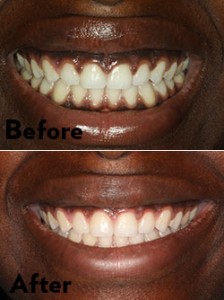 For patients that would like to have less build up of gums and a better looking smile, laser gum lifts are a great option. At Water Tower Dental, we can help reshape your gum line to lengthen your teeth, and eliminate a surplus of gums that distract someone from seeing your brilliant smile. As well, some patients don’t necessarily have a surplus of gums but rather an uneven gum line. When that happens, we are able to create a symmetrical gum line that keeps your teeth looking even and allows for your smile to shine.
For patients that would like to have less build up of gums and a better looking smile, laser gum lifts are a great option. At Water Tower Dental, we can help reshape your gum line to lengthen your teeth, and eliminate a surplus of gums that distract someone from seeing your brilliant smile. As well, some patients don’t necessarily have a surplus of gums but rather an uneven gum line. When that happens, we are able to create a symmetrical gum line that keeps your teeth looking even and allows for your smile to shine.
The risks that come with laser gum lifts are low. Complications can arise which include excessive bleeding and swelling of the gums or allergic reactions to the anesthesia during the treatment. However, these complications are very rare compared to more serious dental surgeries.
If you’re interested in reducing your gums or creating a more even gum line, contact Water Tower Dental today and talk to our team of dental experts to learn how your can start your path to a brighter smile.
October 31st, 2013
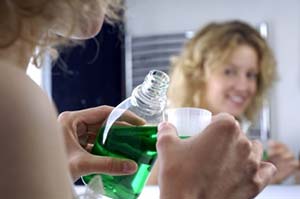 Mouthwash is an essential key to proper oral hygiene. However, many Americans misuse the product, either by using too much, too little, or often not using it for the right amount of time. To ensure that you’re using the proper mouthwash practices, we would like to offer you this simple guide to using mouthwash.
Mouthwash is an essential key to proper oral hygiene. However, many Americans misuse the product, either by using too much, too little, or often not using it for the right amount of time. To ensure that you’re using the proper mouthwash practices, we would like to offer you this simple guide to using mouthwash.
There are several kinds of mouthwashes to choose from, and knowing what you want your mouthwash to do for you can help you choose which is right. However, all mouthwashes do have a simple, yet main purpose: to help kill bacteria and flush away loose plaque in your mouth. Following the steps below, no matter what kind of mouthwash you use, will ensure that its main objective is completed.
Floss and Brush First
Many confuse this, but the proper way to practice good oral hygiene with mouthwash is by flossing, brushing, and then using your mouthwash. Flossing is your first step to loosen and remove bacteria and plaque from the hard to reach spaces between and under your teeth. Brushing removes that plaque along your gum line and on the top of your teeth. Mouthwash then sanitizes and kills any bacteria that may be left in the mouth that your toothbrush could not reach. Together, this tri-force of oral hygiene will make your mouth shine with cleanliness.
Use The Right Amount
After flossing and brushing, you need to make sure you use the right amount of mouthwash. You don’t want to use too much as you might swallow it, and if you use too little, you won’t feel the effects of the solution. While each mouthwash may recommend varying amounts (check the bottles directions), the standard is 20 mL of the solution. Some bottles have caps with measuring markers to determine the right amount. If you use Dixie cups, you’ll want to fill just less than a third of it with mouthwash.
Dilute If You Must
Some mouthwash companies recommend you dilute your mouthwash with water. Read your product’s directions to determine if you must dilute. If you have trouble using mouthwash, we suggest diluting just slightly. Adding too much water to your mouthwash can hurt your chances of killing all bacteria.
Time Yourself
It’s best to have a watch or clock to keep good time when cleaning your teeth. With flossing and brushing taking over 4 minutes, you might become impatient and cut your mouth-washing short. Unfortunately that can keep the mouthwash from working effectively. We recommend using your mouthwash for 30 seconds to 1 minute depending on the products’ directions. Most will recommend using mouthwash between that amount of time. We like to play it safe and always use it for a full minute.
Swish Right
When it comes to using the mouthwash, swish it back and forth in your mouth, and make sure to reach all areas from the top gums to lower front teeth. Just before spitting, gargle the solution for a few seconds making sure not to swallow it.
Spit It
Spit your mouthwash out and try to avoid rinsing your mouth with water. If you must, only rinse once. When finished, avoid eating anything for at least 30 minutes. We recommend using mouthwash once a day, preferably at nighttime so you avoid eating afterward.
It’s as simple as that. If you follow these directions, you’ll be well on your way to a great smile and fresh breath. And remember to visit your dentist at least twice a year for routine cleanings and check ups. Call Water Tower Dental today if you’re looking for expert dentists that can help you revitalize your mouth and give you the smile you deserve.
 We’ve all been taught from a very young age about the dangers of sugar. We’re told to avoid candy, and to eat your vegetables. And while that is good advice, it misses the point. Sugar is one of the easiest fermentable substances available, and found in hundreds of foods, not just candy, so why the stigma? Well, it’s not so much the sugar that’s bad for your teeth; it’s the bacteria that love the sugar just as much as you.
We’ve all been taught from a very young age about the dangers of sugar. We’re told to avoid candy, and to eat your vegetables. And while that is good advice, it misses the point. Sugar is one of the easiest fermentable substances available, and found in hundreds of foods, not just candy, so why the stigma? Well, it’s not so much the sugar that’s bad for your teeth; it’s the bacteria that love the sugar just as much as you.
 The Temporomandibular Joint, or (TMJ) is a hinge joint that connects your lower jaw to the bone of the skull located just in front of the ears. This joint allows the jaw to move freely so you can talk, chew, yawn, etc. The muscles that attach to the joint help control the position of the jaw and its movements. Often, many confuse TMJ with the term TMD, Temporomandibular Joint Disorder. Whether you refer to it one way or the other, TMD is a painful and often frustrating condition that, if not treated, can cause serious issues.
The Temporomandibular Joint, or (TMJ) is a hinge joint that connects your lower jaw to the bone of the skull located just in front of the ears. This joint allows the jaw to move freely so you can talk, chew, yawn, etc. The muscles that attach to the joint help control the position of the jaw and its movements. Often, many confuse TMJ with the term TMD, Temporomandibular Joint Disorder. Whether you refer to it one way or the other, TMD is a painful and often frustrating condition that, if not treated, can cause serious issues. In the most severe cases, TMD can drastically change your life and become a very debilitating problem. The disc within the jaw joint can slip out of its position, most likely during sleep. When the person awakes, they discover that their jaw will not open more than a few millimeters. The person can’t open their mouth to eat, talk, or even brush their teeth.
In the most severe cases, TMD can drastically change your life and become a very debilitating problem. The disc within the jaw joint can slip out of its position, most likely during sleep. When the person awakes, they discover that their jaw will not open more than a few millimeters. The person can’t open their mouth to eat, talk, or even brush their teeth.
 When a patient has an excessive amount of gum tissue covering their teeth, they can option for a procedure known as laser gum recontouring, or more commonly referred to as laser gum lifts. This simple procedure can transform a person’s mouth and give them a more confident smile. So what are laser gum lifts and how is the procedure performed?
When a patient has an excessive amount of gum tissue covering their teeth, they can option for a procedure known as laser gum recontouring, or more commonly referred to as laser gum lifts. This simple procedure can transform a person’s mouth and give them a more confident smile. So what are laser gum lifts and how is the procedure performed? For patients that would like to have less build up of gums and a better looking smile, laser gum lifts are a great option. At Water Tower Dental, we can help reshape your gum line to lengthen your teeth, and eliminate a surplus of gums that distract someone from seeing your brilliant smile. As well, some patients don’t necessarily have a surplus of gums but rather an uneven gum line. When that happens, we are able to create a symmetrical gum line that keeps your teeth looking even and allows for your smile to shine.
For patients that would like to have less build up of gums and a better looking smile, laser gum lifts are a great option. At Water Tower Dental, we can help reshape your gum line to lengthen your teeth, and eliminate a surplus of gums that distract someone from seeing your brilliant smile. As well, some patients don’t necessarily have a surplus of gums but rather an uneven gum line. When that happens, we are able to create a symmetrical gum line that keeps your teeth looking even and allows for your smile to shine. Mouthwash is an essential key to proper oral hygiene. However, many Americans misuse the product, either by using too much, too little, or often not using it for the right amount of time. To ensure that you’re using the proper mouthwash practices, we would like to offer you this simple guide to using mouthwash.
Mouthwash is an essential key to proper oral hygiene. However, many Americans misuse the product, either by using too much, too little, or often not using it for the right amount of time. To ensure that you’re using the proper mouthwash practices, we would like to offer you this simple guide to using mouthwash.
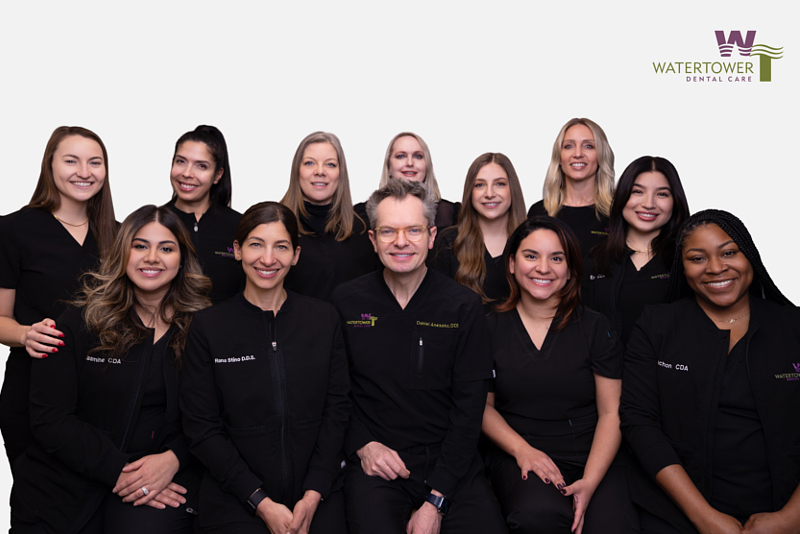


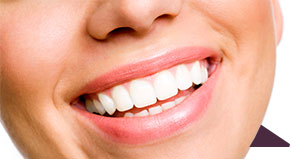
 Website Powered by Sesame 24-7™
Website Powered by Sesame 24-7™